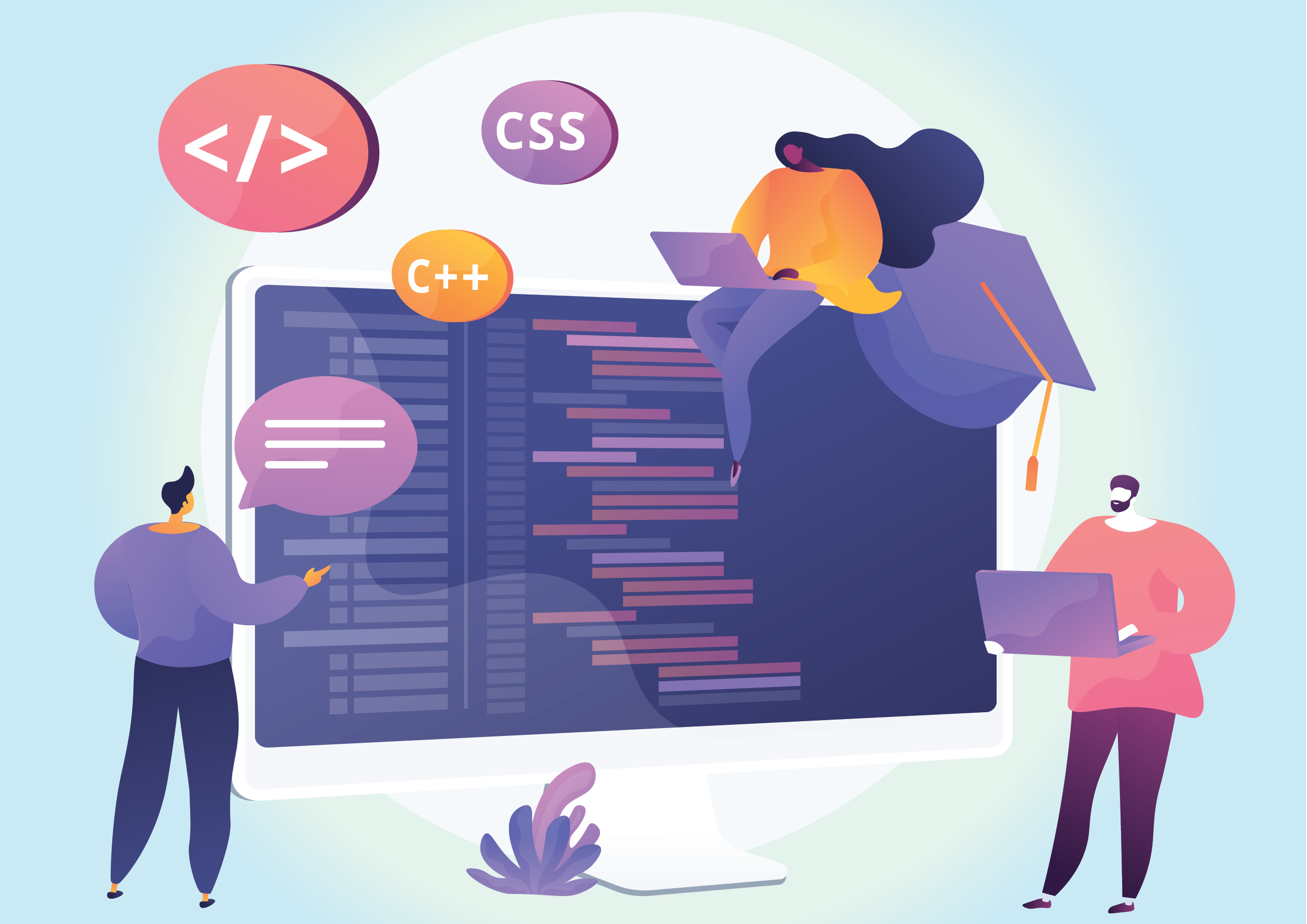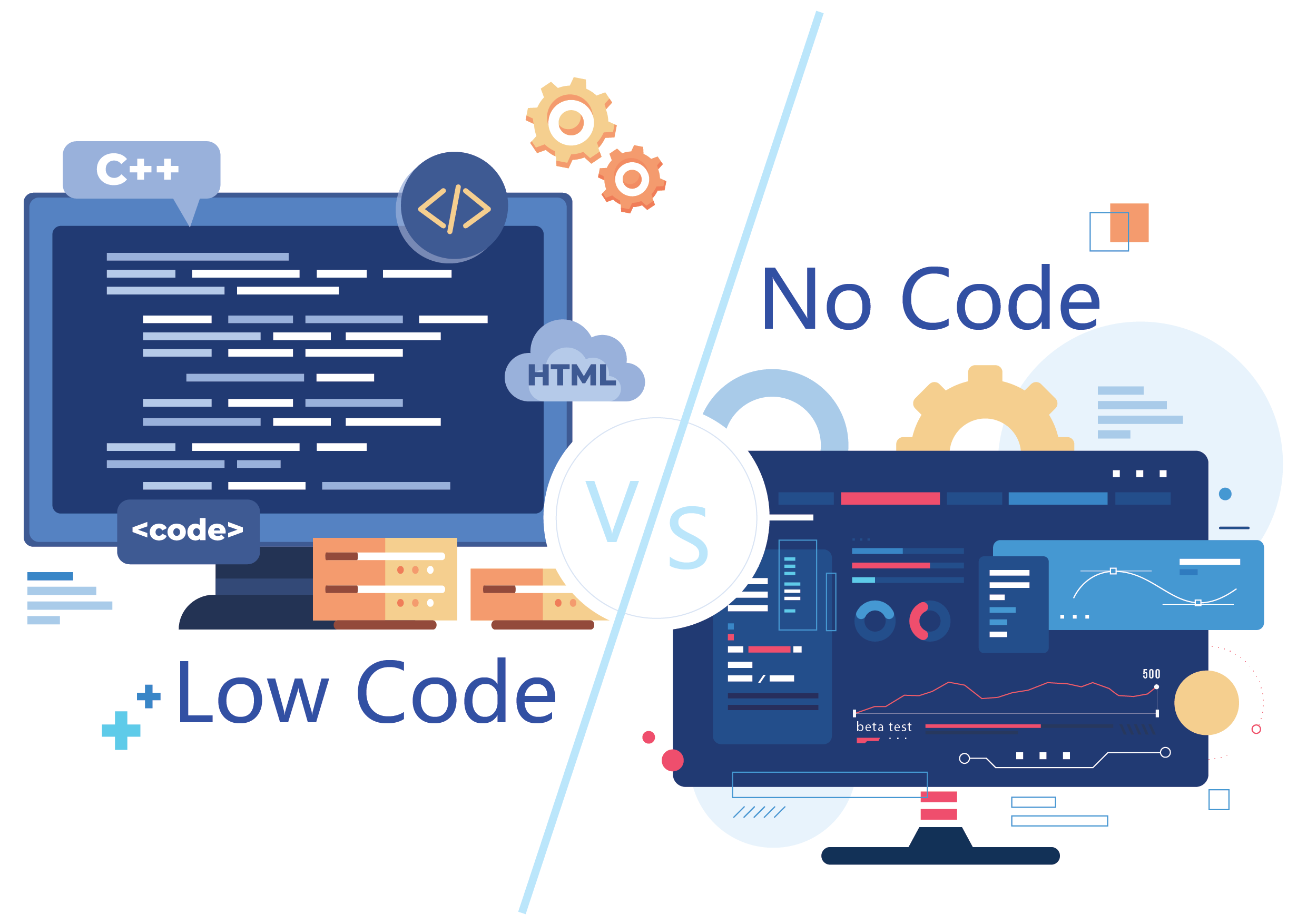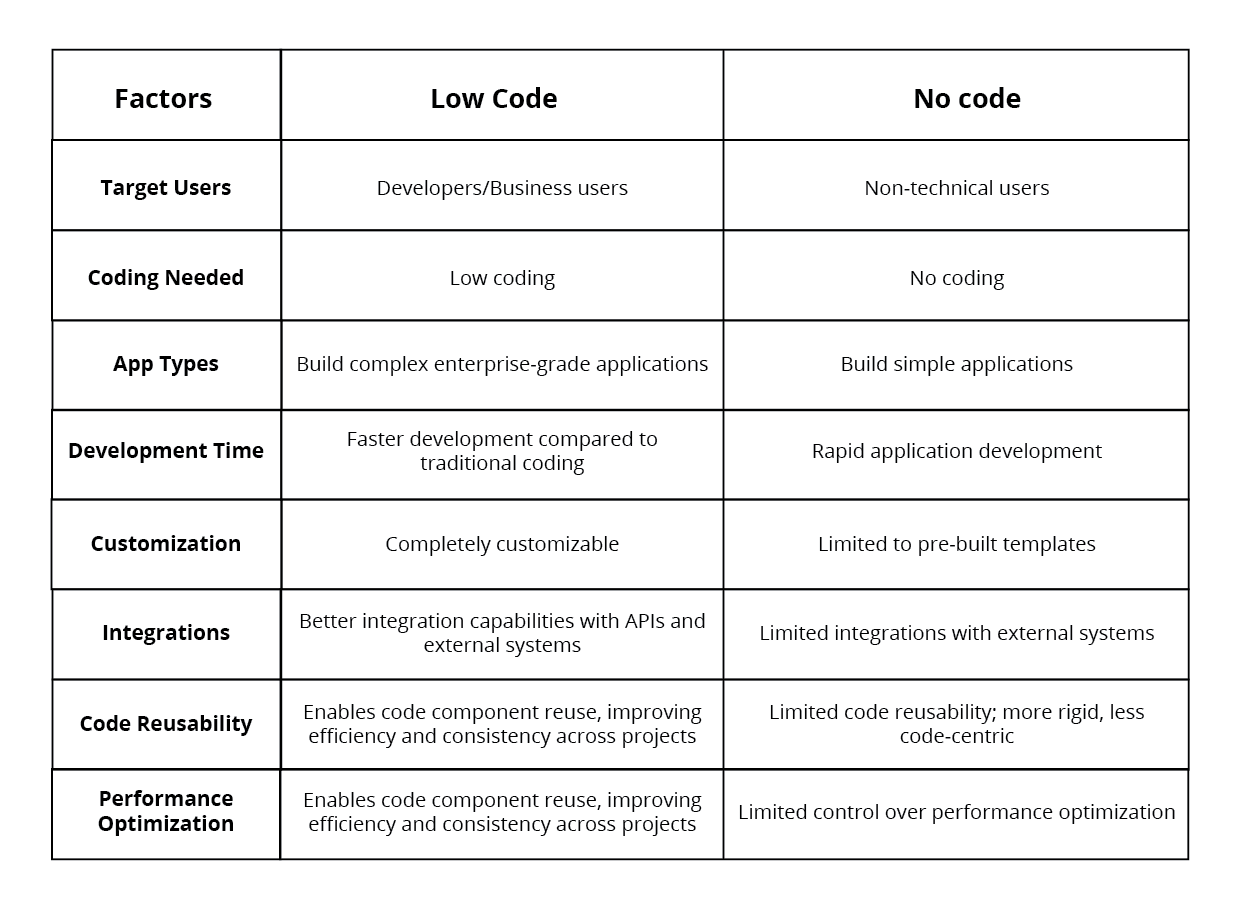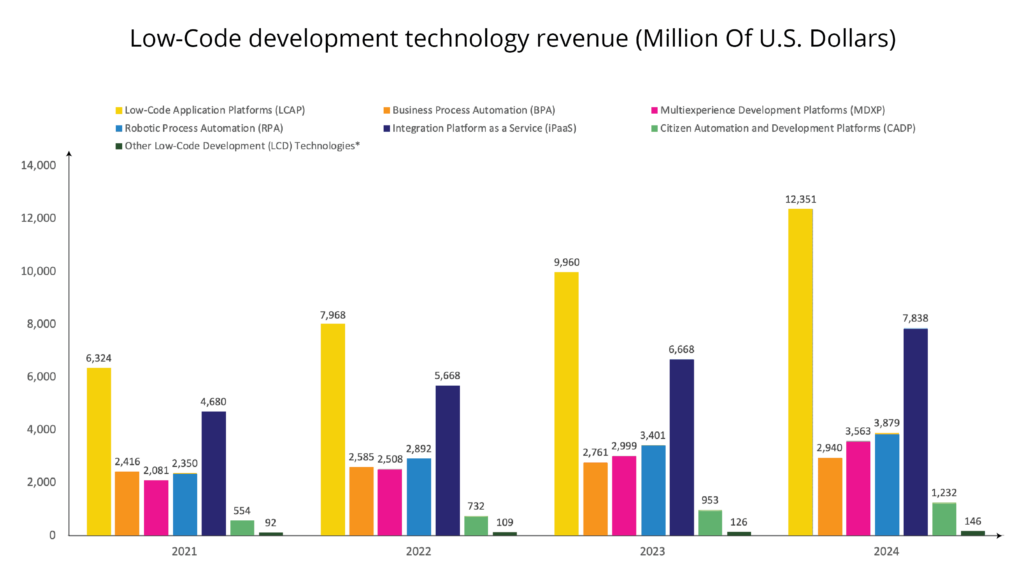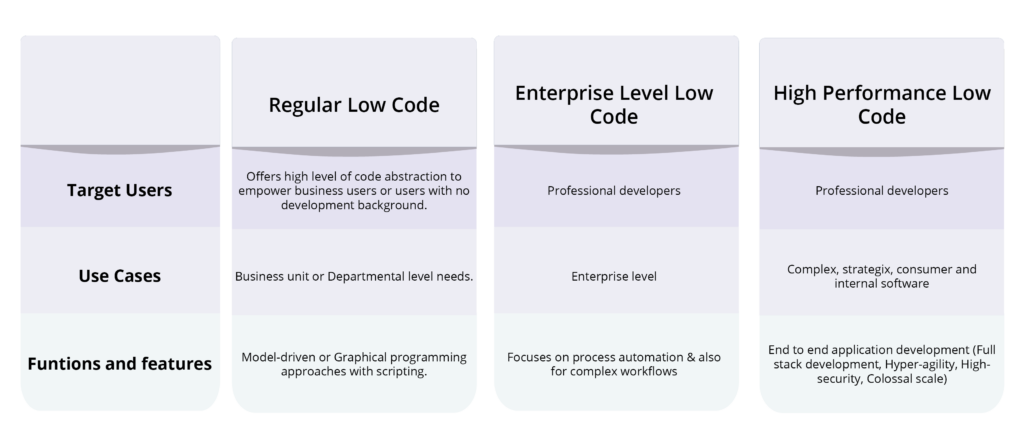Choosing the best Low-Code platform often seems simple… until you face the reality of the market. With over 300 options, the decision of ‘which low-code platform to choose’ is tiring and tough.
Then there’s another problem. Every low-code no-code platform (LCNC) positions itself differently. Some promise quick fixes like “zero coding” or “build your app in a day”, while others brand their platforms as “AI-powered” and “omnichannel”. This is one of the reasons why it’s hard to compare Low-Code platforms. But there’s a bigger problem: these promises may not address what really matters to you.
You know the challenges well:
- productivity that just won’t budge,
- teams losing their drive,
- IT systems that are more of a puzzle than a tool,
- high costs that don’t add up well,
- developers who are hard to find,
- security that keeps you up at night,
- and apps that just don’t work well together.
It’s time for clarity. And the time is now. Let’s break through the noise and confusion.
This guide aims to answer the crucial questions that will guide you toward the best low-code platform for your enterprise. With each question, we will unpack why it’s important, what unresolved pains it hides, and how Amoga tries to address these pain points. If nothing else, we hope to equip you with questions you can (and must) ask any LCNC solution, to probe how relevant they truly are for you.
The answers to these questions help you to compare Low-Code platforms. Moreover, they help you uncover the best Low-Code platforms that meet your specific needs.
Question #1 – Does your low-code platform have the depth to handle my complex enterprise?
As a CTO, you manage an absolute whirlwind: interconnected systems, sprawling data, and intricate processes. Finding the best low-code platform means finding one that simplifies this landscape, not adds to it. Such a platform must overcome these three problems.
Fragmentation
Processes fragmented across departments create frustration – bottlenecks, data silos, and a lack of visibility slow down decision-making. Amoga’s productivity suite addresses this head-on. We do this by digitizing and connecting your processes. This streamlines workflows breaks down departmental barriers, and gives you the transparent view you need.
Badly tailored technology
Your business is unique, but off-the-shelf software rarely feels that way. Adapting it to your organizational structure often requires costly workarounds and compromises. Amoga, however, is built to mirror your business hierarchy. Our unique approach makes this possible: a platform that’s 90% no-code and 10% low-code, requiring only basic Python and JS skills. This ensures the platform is usable for citizen developers (routine customization) and usable for novice developers (hyper-customization).
Access and control limitations
Another issue is the lack of detailed access control within platforms. It’s crucial to manage who can see and do what within your applications. Amoga provides robust role-based access control and user management. This means you can set up detailed permissions, ensuring that every user has access to what they need and nothing more. This keeps your system secure and reliable.
In this way, with Amoga, you gain the power and customization of enterprise-grade low-code development. Build tailored CRMs, ERPs, and comprehensive applications with remarkable speed, and at a fraction of the usual cost.
How we’ve done this for other clients recently:
- Service CRM – Top e-commerce: We replaced a costly, underperforming CRM with a leading e-commerce platform. Amoga seamlessly integrated seller and customer support processes, driving efficiency and cutting costs by 50%. The entire implementation including data migration took just 6 weeks.
- Maintenance Management – Largest Kidney-care chain: Amoga streamlined maintenance operations for a healthcare giant with over 3500 machines across 300 branches. We integrated machine data for predictive maintenance, automated routine tasks, and implemented robust case management workflows.
Question #2 – Will Your Platform Create Skill Roadblocks?
When exploring the best Low-Code platforms, it’s vital to ask if the platform will lead to skill bottlenecks. Here’s how Amoga addresses this concern:
Visual and User-Friendly Design
Traditional development is hard, slow, and expensive. Amoga counters this with its visual drag-and-drop capabilities and a simplified low-code approach. This design minimizes the need for advanced technical skills. This also makes the development process accessible and prevents delays caused by skill gaps.
Rapid Onboarding
Every new platform comes with a steep learning curve. Amoga changes this. To access the most advanced capabilities of Amoga, all you need is foundational knowledge in JavaScript, Python, and APIs. This approach means your entry-level developer is well-equipped to design and develop with Amoga. By eliminating potential skill bottlenecks, Amoga stands out among the best Low-Code platforms.
Integration of Communication Tools
Integrating various communication channels often requires specialized skills. Amoga supports seamless integration of channels like email, phone, SMS, and WhatsApp. This means that communication doesn’t become a hurdle. This feature positions Amoga favourably when you compare Low-Code platforms for ease of integration.
How we did this for other clients recently
- Employee lifecycle – Top consumer tech: This case involved onboarding and offboarding over 10,000+ workers, integrating with multiple systems like AD, IAM, HRMS, and service CRM. The rapid onboarding of the client team within a week illustrates that Amoga can handle complex HR processes without introducing new skill bottlenecks.
- Microlearning App – Leading cab service provider: Amoga was used to create a microlearning application for over 1000+ drivers, featuring video content with assignments and comprehensive analytics and reporting. The ease of content delivery and tracking without the need for advanced technical skills affirms that Amoga facilitates skill development without creating bottlenecks.
Question 3: How does your platform strike the balance between speed and customization?
The promise of the best low-code platforms is speed and agility. Yet, achieving the right level of customization is equally important. That’s how you ensure your solutions truly fit your unique business needs. When you compare Low-Code platforms, ask this question: can you have both?
Problem: Many vendors force a compromise. Pre-built solutions offer speed but lack the flexibility to adapt to your specific processes, while highly customisable platforms often come with a steep development curve.
This trade-off leads to frustration. You either settle for generic tools that don’t fully address your pain points, or you face lengthy development timelines that negate the promise of low-code efficiency.
Solution: Amoga is designed to bridge this gap. Its simplified low-code foundation, combined with powerful no-code capabilities, allows you to build tailored solutions without sacrificing speed. Need deeper customization? The platform accommodates basic Python and JavaScript for extending logic. This ensures you’re never constrained. Amoga consistently delivers solutions 10x faster and at 1/4th the cost compared to traditional methods or competitors like SFDC
Problem: Customization often introduces instability. Bespoke solutions built on complex codebases can be fragile and difficult to maintain as your business evolves.
This hidden cost negates the benefits of customization, leaving you with a system that’s both inflexible and prone to errors.
Solution: Amoga’s reliable tech stack, built with proven microservices, ensures stability even as you customize. Additionally, efficient API management enables seamless integration with external systems. This gives you the freedom to extend your solution’s capabilities with confidence.
How we did this for other clients recently
- Legacy ERP replacement – Automobile parts supplier: Amoga demonstrated its ability to balance speed and customization by replacing a legacy ERP system for an automobile parts supplier. It automated processes for purchase, sales, and inventory with analytics of inventory locations and went live in just 8 weeks, indicating a rapid deployment with tailored automation solutions.
- Sales & Engagement CRM – EdTech startup: Amoga delivered a CRM system with a lead-to-deal sales cadence and workflow, automating service delivery and sales engagement. Implemented in 3 weeks, this case shows Amoga’s commitment to delivering customized solutions rapidly without compromising on client-specific needs.
Get the best low-code platform; it matters
By 2024, 75% of large enterprises will be using at least four Low-Code development tools. This includes both citizen development initiatives and IT application development. Don’t get caught on the wrong foot. Insist on the best low-code platform; get it. What’s slowing you down? Is it outdated tech, high development costs, or the lack of skilled developers? At Amoga, we specialize in navigating these challenges.
Amoga is here to ensure that your journey towards this goal is smooth and efficient. Are you ready to take the next step? Let’s talk about your path to success and bring those ambitious IT goals within reach. Let’s get started!


